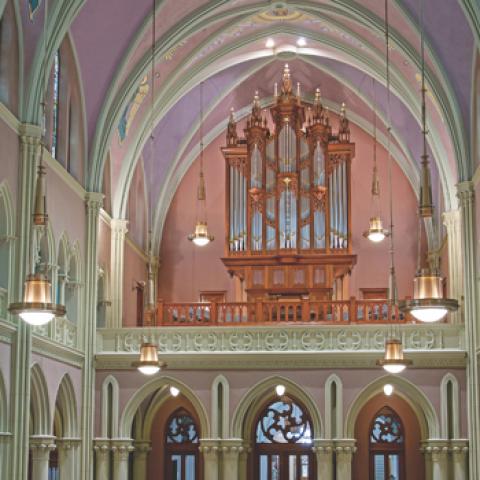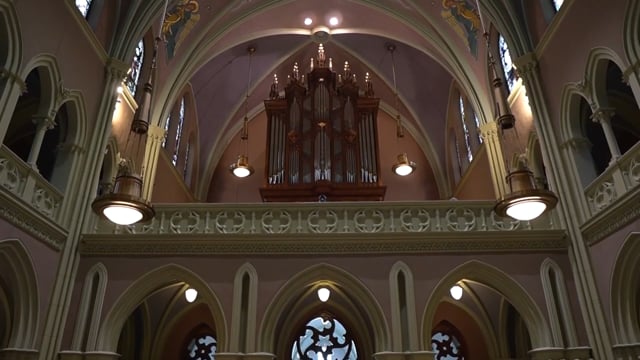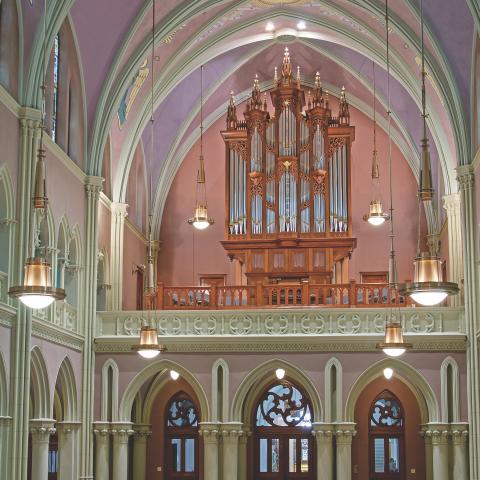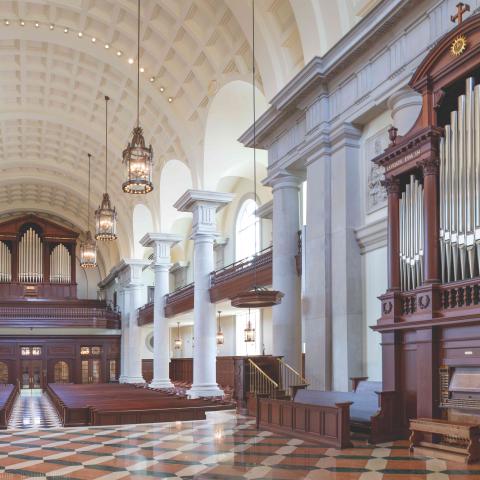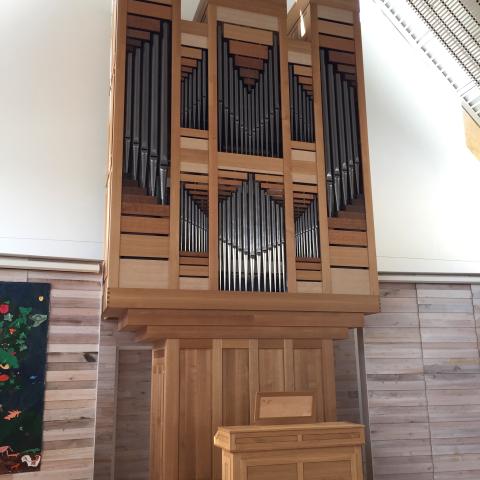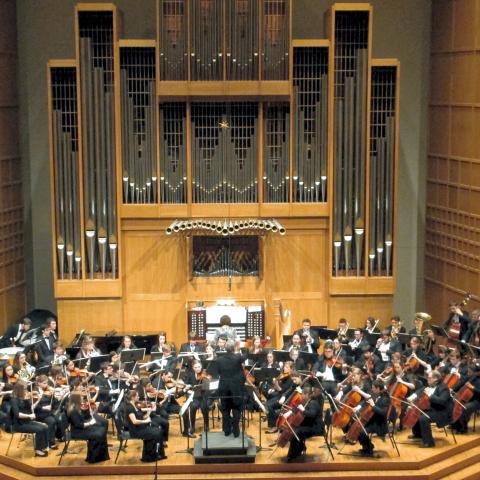
Taylor and Boody Organbuilders, Staunton, Virginia announces a contract for a new organ, its Opus 81, for a concert hall currently being built for Wheaton College, Wheaton, Illinois. The organ will be ready for installation in approximately two years. Edward Zimmerman is professor of organ at Wheaton. The new concert hall is designed by FGM Architects, Oak Brook, Illinois, in consultation with Dawn Schuette of Threshold Acoustics in Chicago.
Wheaton College, a liberal arts Christian college, was founded in 1860. In 2017, the Wheaton Conservatory of Music embarked on construction of the Armerding Center for Music and the Arts to consolidate all the music activities on campus, which were previously in six locations. The initial phase of the project provided for teaching studios, practice rooms, choral rehearsal space, academic classrooms, and a recital hall seating 100. A second phase, now under construction, is a 650-seat concert hall designed with a resonant acoustic for orchestral, choral, and organ music. The new organ will be located on a gallery above the stage, a position for performance and accompaniment. A Rückpositiv division will be placed on the railing just above the stage.
Wheaton already has a 50-stop Casavant organ, installed in 2001 in Edman Memorial Chapel, a 2,400-seat concert hall. It is a French-inspired, eclectic instrument that can perform a wide range of organ literature. The Taylor and Boody, by contrast, is planned to speak in a distinctly Germanic voice. The instrument will have 31 stops on two manuals and pedal with suspended mechanical key and stop action. The organ case will be based on Werkprinzip concepts with Hauptwerk 8′ Principal, Rückpositiv 4′ Praestant, and Pedal Principal in façade. Hand pumping will be possible with three wedge bellows and pumping levers. Unusual in the specification is the inclusion of two Westerwaldvogelgesangs. This harks to Zimmerman’s family who were immigrants from the Westerwald area of Germany. The new organ will be used for solo and ensemble performance, teaching, and practice.
For information: www.taylorandboody.com.

